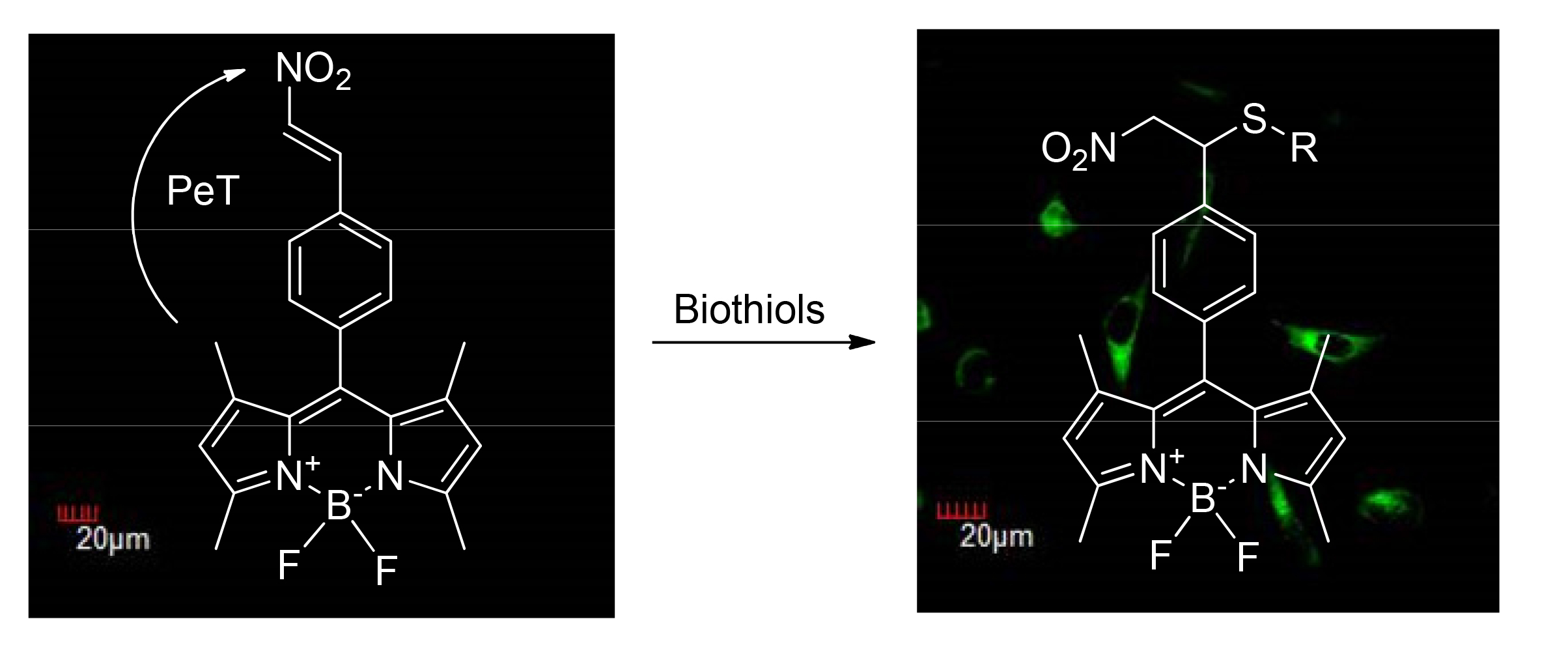[1] Wood, Z. A.; Schröder, E.; Robin Harris, J.; Poole, L. B. Trends Biochem. Sci. 2003, 28, 32.
[2] Townsend, D. M.; Tew, K. D.; Tapiero, H. Biomed. Pharmacother. 2003, 57, 145.
[3] Reddie, K. G.; Carroll, K. S. Curr. Opin. Chem. Biol. 2008, 12, 746.
[4] Rusin, O.; St Luce, N. N.; Agbaria, R. A.; Escobedo, J. O.; Jiang, S.; Warner, I. M.; Dawan, F. B.; Lian, K.; Strongin, R. M. J. Am. Chem. Soc. 2004, 126, 438.
[5] Paulsen, C. E.; Carroll, K. S. Chem. Rev. 2013, 113, 4633.
[6] Seshadri, S.; Beiser, A.; Selhub, J.; Jacques, P. F.; Rosenberg, I. H.; D'Agostino, R. B.; Wilson, P. W. F.; Wolf, P. A. New Engl. J. Med. 2002, 346, 476.
[7] Kaluzna-Czaplinska, J.; Zurawicz, E.; Michalska, M.; Rynkowski, J. Acta Biochim. Pol. 2013, 60, 137.
[8] Estrela, J. M.; Ortega, A.; Obrador, E. Crit. Rev. Clin. Lab. Sci. 2006, 43, 143.
[9] Holmström, K. M.; Finkel, T. Nat. Rev. Mol. Cell Biol. 2014, 15, 411.
[10] Sippel, T. O. J. Histochem. Cytochem. 1981, 29, 314.
[11] Jung, H. S.; Chen, X.; Kim, J. S.; Yoon, J. Chem. Soc. Rev. 2013, 42, 6019.
[12] Wang, S. Q.; Shen, S. L.; Zhang, Y. R.; Dai, X.; Zhao, B. X. Chin. J. Org. Chem. 2014, 34, 1717(in Chinese). (王胜清, 申世立, 张延如, 戴溪, 赵宝祥, 有机化学, 2014, 34, 1717.)
[13] Niu, L.-Y.; Chen, Y.-Z.; Zheng, H.-R.; Wu, L.-Z.; Tung, C.-H.; Yang, Q.-Z. Chem. Soc. Rev. 2015, 44, 6143.
[14] Yan, P. P.; Wang, T.; Zhang, D.; Ma, X. X. Chin. J. Org. Chem. 2019, 39, 916(in Chinese). (闫沛沛, 王婷, 张丹, 马晓雪, 有机化学, 2019, 37, 916.)
[15] Hui, X. P.; Yin, C.; Ma, J.; Xu, P. F. Synth. Commun. 2009, 39, 676.
[16] Sun, Y.-Q.; Chen, M.; Liu, J.; Lv, X.; Li, J.-F.; Guo, W. Chem. Commun. 2011, 47, 11029.
[17] Zhang, M.; Wu, Y.; Zhang, S.; Zhu, H.; Wu, Q.; Jiao, L.; Hao, E. Chem. Commun. 2012, 48, 8925.
[18] Kang, J.; Huo, F.; Chao, J.; Yin, C. Spectrochim. Acta A 2018, 195, 16.
[19] Wang, L. Y.; Chen, X. G.; Cao, D. R. Sens. Actuators, B 2017, 244, 531.
[20] Jung, H. S.; Ko, K. C.; Kim, G. H.; Lee, A. R.; Na, Y. C.; Kang, C.; Lee, J. Y.; Kim, J. S. Org. Lett. 2011, 13, 1498.
[21] Ma, C.; Wei, C.; Li, X.; Zheng, X.; Chen, B.; Wang, M.; Zhang, P.; Li, X. Dyes Pigm. 2019, 162, 624.
[22] Matsumoto, T.; Urano, Y.; Takahashi, Y.; Mori, Y.; Terai, T.; Nagano, T. J. Org. Chem. 2011, 76, 3616.
[23] Kálai, T.; Hideg, K. Tetrahedron 2006, 62, 10352. |
